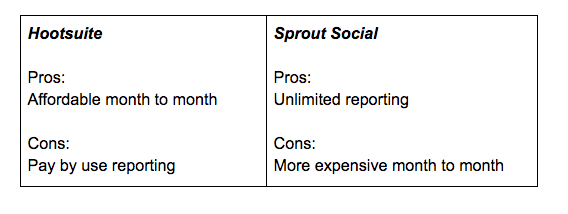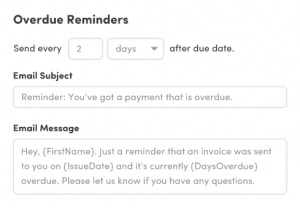— January 24, 2018
Whether it’s asking for funding to attend a lesser-known conference, or a new tool/platform to add to your team’s tech stack, the skill of successfully pitching your boss is vital for career advancement.
Everyone knows successful marketers are well-rounded professionals who can point to the results they have driven. But before getting to successful execution, the best marketers advocate to fill their tool belt with the products and training they need, sometimes even before the “need” is obvious.
Long term success depends on your ability to sell yourself and your ideas – that’s the standout factor. This can seem like a daunting experience for newcomers in the decision-influencing department, or for new directors with bigger budgets to allocate.
We’re going to walk through the seven steps to selling your boss – on new ideas, conferences, or platform solutions.
1. Set Up a Meeting
You want to start by getting your idea on your boss’s radar. Though it can be tempting to simply shoot an email with an outline of the reasons your company should explore your idea nestled safely under the subject line “Thoughts?”, you will be much more successful if you ask for a bonafide meeting.
The reason? According to research from the Harvard Business Review (HBR), your boss is much more likely to have a positive impression of your idea if you pitch them in person.
When HBR researchers presented evaluators in their study with both recorded video presentations and written pitches, evaluators were significantly more likely to view the presenter (that’s you!) as more intelligent, and also view their pitch more favorably when viewing the in-person version.
The bottom line here is that though it will likely require more prep work on your part, having a face-to-face conversation with your boss about your idea will benefit you in the long run.
2. Do Your Homework: Get Clear on Your Why
Before your meeting, start your preparation by being as explicit as possible about what issue the item/idea on your wishlist will address in your (or your team’s) work life.
Write down answers to questions like:
- Why do you need this?
- Whose problem does your proposal solve? (Yours? Your whole team’s? A few different team members’?)
- What are you being stopped from doing because your idea has not been implemented?
- What is being lost without it? (Time? Potential for creativity? Better content?)
To help illustrate this point, I’ll walk you through the process we just went through at SnapApp to explore a new social media management tool.
Our why:
We needed a new tool because substantial amounts of time that could be spent on other projects was being spent doing manual reporting by hand, due to the limited functionality in our old management tool. We were also cobbling together many other free tools to achieve the appropriate functionality for driving key social metrics in our program, meaning more lost time and information.
3. Translate Your Why Into an Impact on the Bottomline
This is an important step that is often overlooked. We spend so much time wrestling with the challenge that got us started in this process it’s easy to lose sight of presenting the basics to your boss.
Presenting your idea in a way that directly impacts your company’s bottom line means you are doing some of the mental cartwheels for your boss.
Saying “We are missing out on a huge opportunity to engage with our digital community on a deeper level and quickly respond to issues as they arise,” starts a very different conversation than “I’d like to have this new social media management tool, please.”
When framing out your presentation, it’s your responsibility to explicitly illustrate opportunities your company is missing out on, and also to help your boss share your vision of what the future will look like after implementing your proposal.
Our bottom line impact:
Time is money, and there simply weren’t enough hours in the day to manually assess how our social strategy was working, especially with the disjointed metrics all of our free tools offered. Less time and an inaccurate picture of how our social posts and pages were performing meant as our social media manager, I didn’t have the whole story, and couldn’t create a strategy that would foster growth and engagement. And that meant we were wasting my time, and money.
4. Make Sure Your Pitch Is Cost-Savvy
As much as your boss may want to send you to that expensive marketing conference or allocate resources to a new tool that would expedite existing processes, at the end of the day the budget just may not be there.
Depending on what kind of company or marketing organization you’re a part of, your boss will have different amounts of pull in budget and have varying levels of discretionary budget to work with.
Thinking realistically about how much your boss has the authority to give you to work with will help your ideas have more credence. Suggesting a financially reasonable solution to whatever problem you are experiencing reflects positively on you, and also increases the likelihood that your idea will be implementable.
You can also simply ask your boss for a ballpark figure of what might be appropriate spending for a new tool or for professional development opportunity prior to your proposal conversation. Getting an approximation of what wiggle-room exists in your budget saves your time, your boss’s time, and could save you from seeming out of touch with the organization’s needs by pitching a tool that blows your team’s monthly or yearly budget.
5. Play the Field
Even if you have your heart set on a particular tool it is always a good rule of thumb to seriously consider at least two other comparable options.
Beyond the fact that we can all fall victim to shiny object syndrome – causing us to overlook a less flashy, but maybe better solution – it is important to show your boss you are thinking critically about where you are proposing allocating precious budget.

You also don’t want to discount the power of The Compromise Effect. Econsultancy explains this tennant of decision theory by showing that when making decisions, people are driven to avoid extremes, opting for a compromising middle option when presented with three chocies.

While I’m certainly not suggesting you manipulate your boss into supporting your proposal, presenting diverse options will help your boss from defaulting to the cheapest solution you offer.
If you are looking at higher budget tools or investments, have a salesperson walk you through each of your options and make it clear that you are considering a few different options. Not only will that prompt your sales rep to offer more specific comparisons of product features against their competition, it might just get you a better deal!
Your job at this point in the process is to break out the ol’ trusty yellow legal pad and start a pro-con list.
Our front runners:

Of course you’ll want to consider price and functionality, but a particularly effective strategy is to map out features with business impact in mind.
6. Keep How You Work in Mind When Making Your Decision
When we were selecting a tool, obvious details like price differences in products can seem like no-brainers in populating your pro/con list. However, thinking critically about how you and your team work best is important.
For example, when selecting our social management tool, we had to look at what the minute differences in our options meant for us. Between our two front runners, price vs. function was a big concern, particularly in terms of analytics available through each platform:

After assessing how often we would have the bandwidth on our team to spend dedicated time on reporting and analytics, paying for a few Hootsuite reports a month would likely be the cheaper option for us. However, we also knew that paying per report would disincentivize us to make full use of the tool.
Even though Sprout Social’s monthly base fee was higher, the structure of the payment plan would allow our team to be more efficient – which gave it (a slightly counterintuitive) leg up.
7. Making the Sale!
The last step is to present the results of all your hard work. When you think about this process remember that you are, above all, making an informed argument.
Be conscious of presenting all of the thorough research in a way that doesn’t just skip to the ending. Think like a lawyer, laying out your case (relying on how each solution impacts your company’s bottom line), ultimately leading to your choice as the most logical solution.
You should be sure to include a succinct comparison of each solution you evaluated, and then end on why the solution you selected is the answer.
And, in case you’re wondering how our story ended, we are now happy Sprout Social customers!
It’s All in the Argument
Asking for funding for a new project, new equipment, a different tool, or even a conference registration can be nerve-wracking, but it is also a critical skill to advance your team and your own career goals, regardless of the specific direction you want to move in.
Approaching the decision as a logical process backed by critical thought on your part will make your boss much more comfortable trusting you with their budget, and also position you as a thoughtful go-getter (probably worthy of a promotion!).
Keep your mind open, be prepared, make a clear argument tied to business goals, and get crackin’ on that wishlist.
Business & Finance Articles on Business 2 Community
(35)







